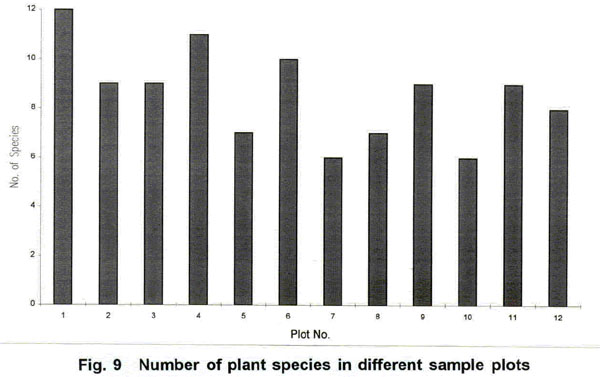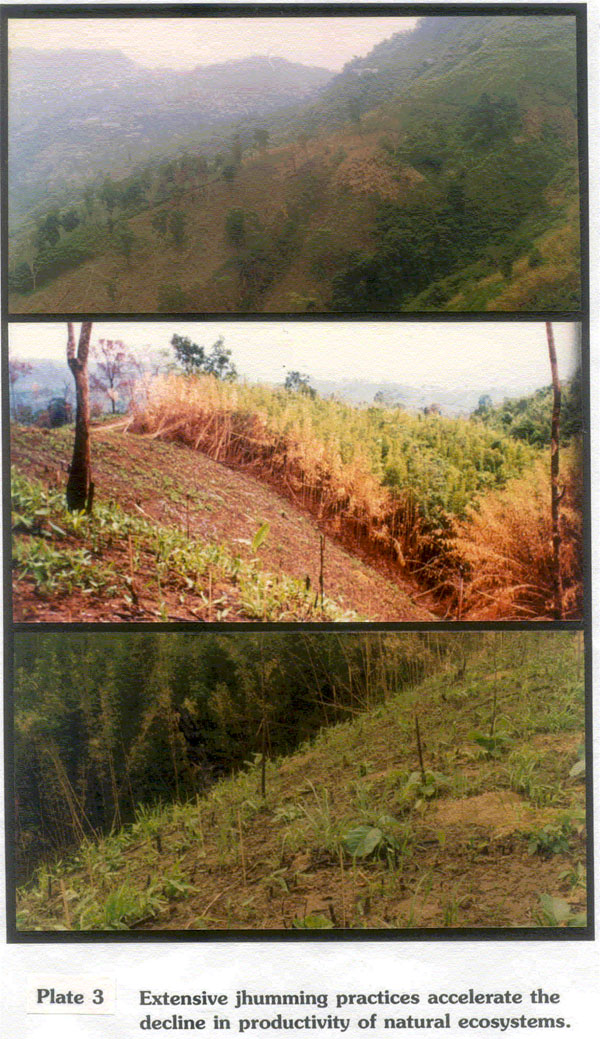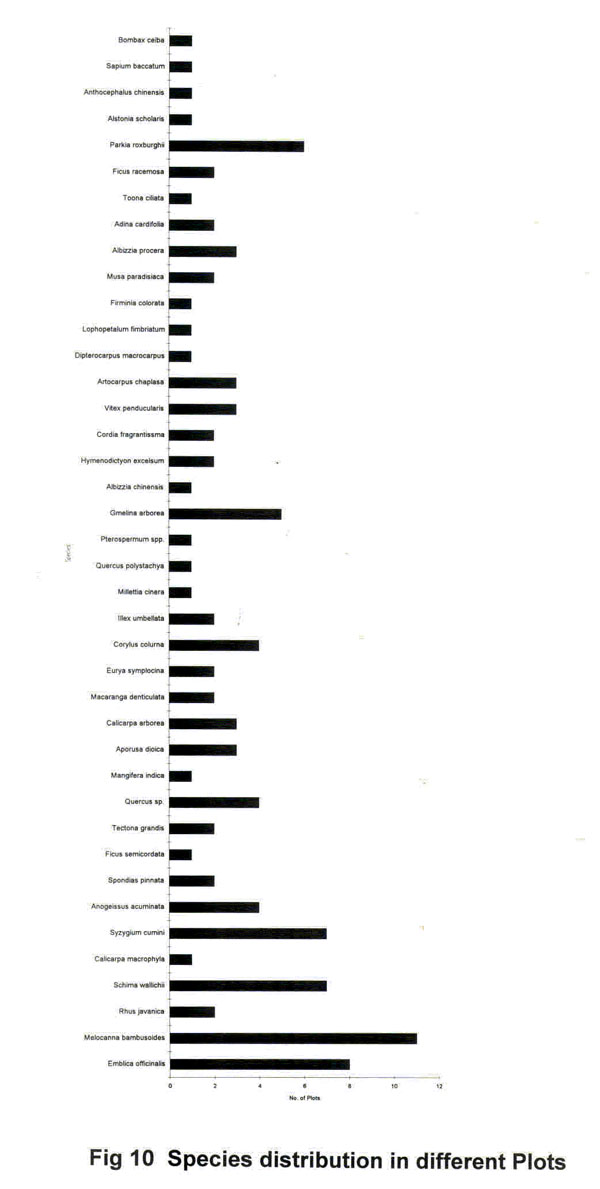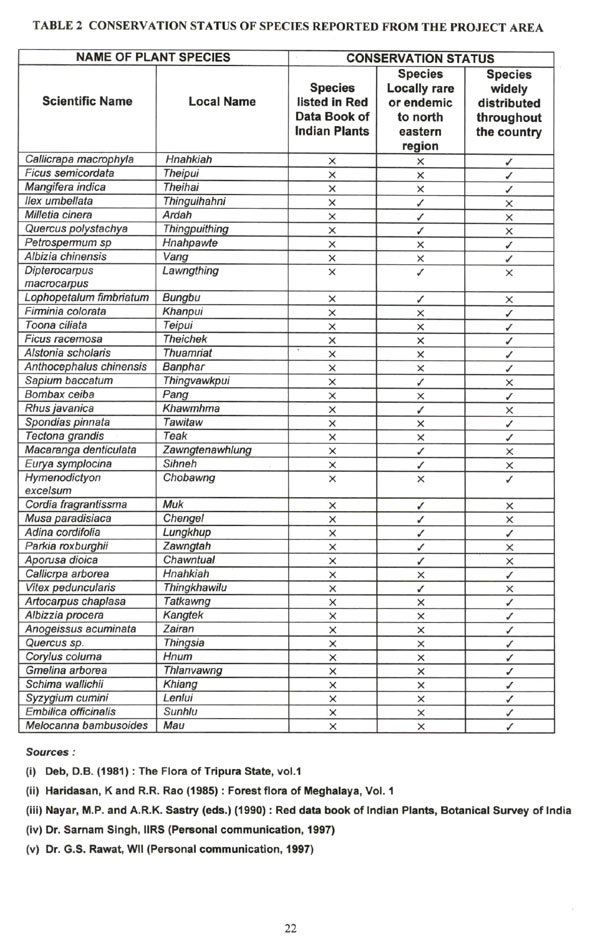Wildlife values of the areas
Flora
Mizoram is endowed with a rich biodiversity which is representative of the Indian sub continent. The project area represents the remnants of tropical wet evergreen forests. The major plant communities consist of admixture of species viz. Dipterocarpus macrocarpus, Artocarpus chaplasa, Parkia roxburgii, Adina cardifolia, Albizzia procera and Schima wallichii. During the course of field survey, a total number of 41 species of plants were recorded from twelve plots randomly laid in different forest classes representing scrubland, plantation, jhum areas and secondary scrub forests. It is however obvious from Fig. 9 that within the plots, the distribution of tree species was limited to a maximum number of twelve species. This is understandable in an area where the unsustainable practices like jhumming, cutting, burning and wood removal have affected both the productivity and the diversity of the natural ecosystem (Plate 3).


It is further evident from the distribution trends of species in different forest classes that only Melocanna bambusoides has been able to establish in all forest classes, irrespective of varying gradients of biotic and natural influences. Most other species like Callicarpa macrophyla, Parkia roxburghii, Rhus javanica have fairly restricted distribution (Fig. 10). It could not be established whether this can be attributed to the restricted distribution of the species within the area or to the inadequate sampling in the area in the short time available for the study. The assessment of the conservation values of the plant species (Table 2) recorded from the project area, establishes the fact that none of the species reported from the project area are rare or endangered (Deb, 1981; Haridasan and Rao, 1985; Nair and Shastri, 1987 and Pers. Comm. Sarnam Singh and G.S. Rawat, 1997). A few species however deserve a mention here for their ecological importance and conservation significance in the regional context. Dipterocarpus as a genera is fairly restricted in its distribution in North Eastern India on account of its exploitation for use as timber (Kanjilal, et. al., 1992). Dipterocarps being representative of the climax communities are ecologically significant. Their dwindling number owing to their exploitation is also a cause of concern. Therefore conservation value of the Dipterocarpus macrocarpus in general is fairly high in the region. Lophopetalum fimbriatum is a species endemic to North-Eastern region of Bangladesh and has not been recorded from the floras of Tripura, Meghalaya and Assam.


Cordia fragrantissma which is also a species confined to North-Eastern region is very rare in Tripura and Meghalaya due to its over exploitation for pole timber.
Parkia roxburghii, another species with generally restricted distribution in North-East is rare in Meghalaya (Haridasan and Rao, 1985). Its distribution in Mizoram is also fairly restricted on account of increasing pressures on forests which are getting rapidly degraded.
The occurrence of these species in the project area is indicative of the conservation significance of the area. The floral representatives of the project area are only some of the remnants of the past glory of the region. This is a clear indication of the fact that several, deteriorative processes have set in the rapid downward trends of decline in the biodiversity of the project area.
Last Updated: January 20, 2014









